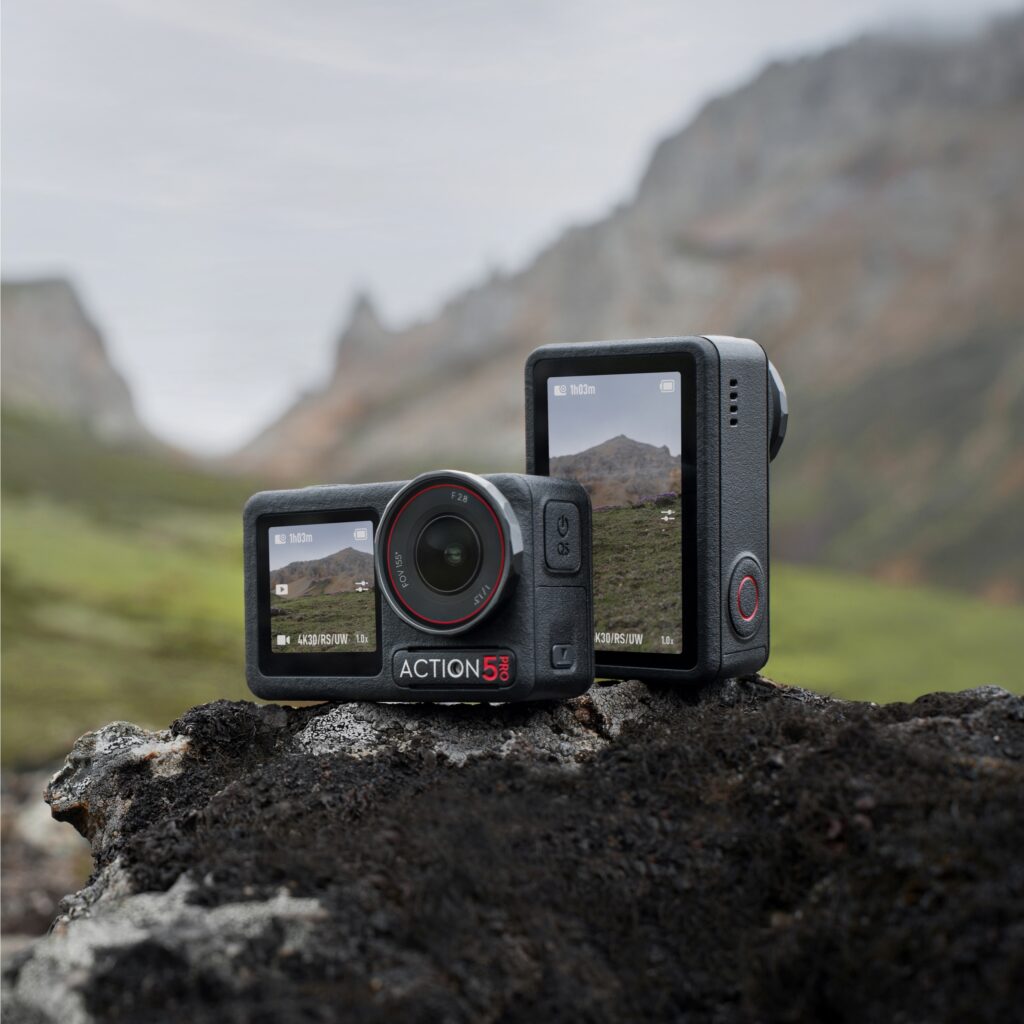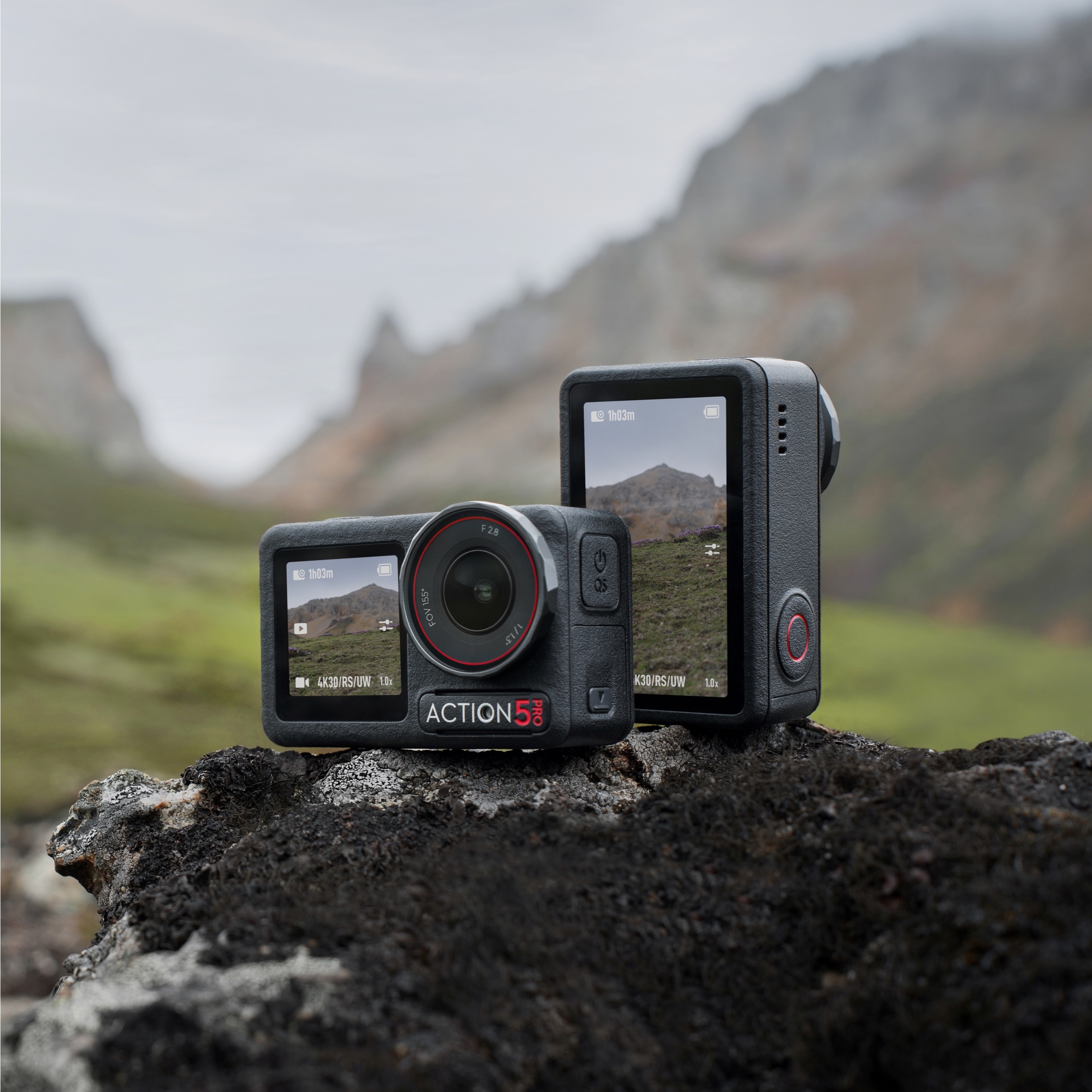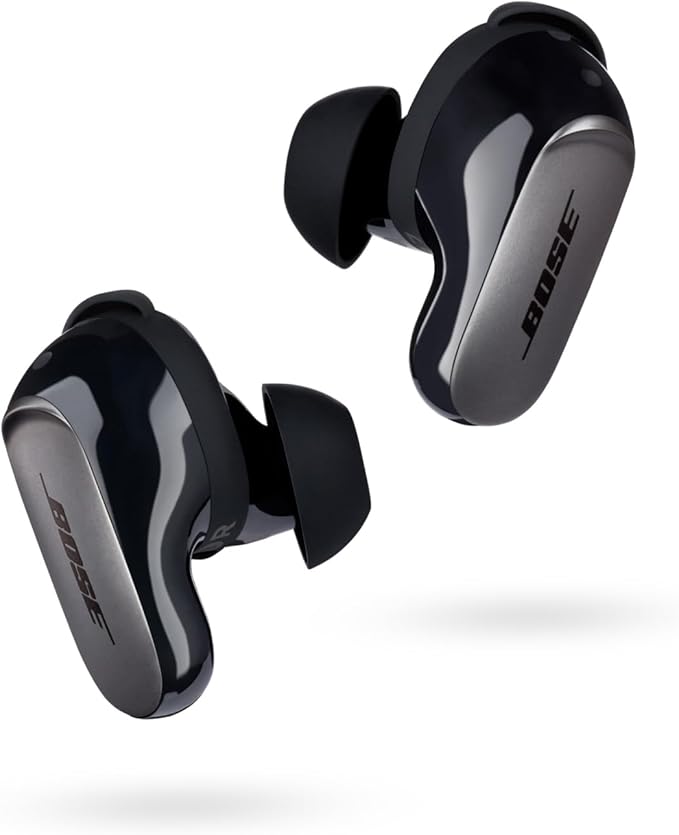If you’re looking to capture high-adrenaline moments—whether it’s mountain biking, diving, or vlogging on the go—then the DJI Osmo Action 5 Pro presents itself as a compelling option. Many users highlight two main needs: one, the desire to record 4K video with excellent image quality in rugged or dynamic settings, and two, to do so with a camera that’s durable, portable and reliable. Yet hesitation remains for several reasons: first, action-cameras in general raise concerns about attachment/mounting stability and waterproofing in extreme environments, and second, some users worry about cost, ecosystem compatibility, or whether the performance uplift truly justifies the upgrade. To evaluate these aspects, we examined how Japanese reviewers—known for their detail-oriented and honest feedback—assess this model for both its pros and cons.

What’s DJI Osmo Action 5 Pro
The DJI Osmo Action 5 Pro is a high-end action camera designed to deliver professional-grade video and photo performance in a compact, rugged form. Positioned for outdoor enthusiasts, vloggers, and content creators, this device brings advanced imaging features in a familiar action cam body, making it suitable for both adventure and semi-pro use.
Features
Design & Build
- Equipped with dual OLED touchscreens (front and back), enabling easy framing for both traditional and selfie/vlog scenarios.
- Supports waterproofing up to 20 meters without additional housing, and can operate in temperatures down to -20 °C, making it robust for demanding environments.
- Built-in storage of 64 GB (approximately 47 GB usable), providing out-of-box storage without immediate need for an external microSD card.
Imaging & Video Performance
- Features a 1/1.3-inch CMOS sensor with an equivalent pixel size of 2.4 μm and a claimed dynamic range of 13.5 stops, supporting 40 MP stills and up to 4K video at 120 fps.
- Video formats include 4K (16:9) up to 120 fps, 2.7K up to 120 fps, and 1080p up to 240 fps for slow-motion capture.
- Lens is fixed at f/2.8 with a wide 155° field of view.
Additional Capabilities
- Supports advanced video features such as D-Log M and HLG color modes for post-production flexibility.
- Offers subject tracking and “HorizonSteady” 360° horizon-lock stabilization to keep footage level even during movement.
- Connectivity includes WiFi 6 and USB 3.0, enhancing data transfer and compatibility with accessories such as microphones.
Battery & Storage
- According to manufacturer claims, the camera supports up to 4 hours of recording in optimal conditions.
- Built-in storage, as noted above, reduces reliance on external cards for initial use.
Models & Line-up
The Osmo Action 5 Pro is available in at least a Standard Combo and an Adventure Combo, the latter offering additional accessories such as extra batteries, charging case, and mounting gear.
Colour or capacity variants have not been prominently specified in the official listings.
Overall Impression
The DJI Osmo Action 5 Pro presents a well-rounded action camera package, with a larger sensor, professional-level video modes, and robust build quality. While it remains within the 4K video category rather than pushing to 6K or 8K, its spec sheet and feature set make it a practical choice for users seeking high performance in a compact adventure-ready format.
Positive Reviews
- Long, reliable battery life—even in 4K. Several users filmed close to two hours continuously at 4K/60p in a warm room, and others reported ~160–240 minutes in 4K/30 or FHD before swapping packs.
- Strong heat management with no thermal shutdowns. Car-mounted testers noted high body temperature but continuous operation, and another user said summer driving didn’t trigger overheat stops.
- Instant record start reduces missed moments. Multiple reviewers said pressing the record button starts capture “immediately,” solving the few-second lag they experienced on other brands.
- Firmware noticeably improved stabilization. After updating to v01.02.03.30, a driver saw cleaner stitch points after red-light cuts and fewer horizon jolts on complex junction curves.
- Effective RockSteady stabilization for most motion. Joggers described “slider-like” smoothness on stairs and slopes, and riders found highway footage steady despite mount vibration.
- Horizon lock is dependable in typical use. Users said standard driving and walking stayed level, and post-update behavior felt on par with competitors in daily scenes.
- Excellent waterproofing and depth features for diving. Skin divers praised native 20 m rating and an on-screen depth readout that made a separate dive watch unnecessary.
- Battery endurance suits underwater days. Ocean shooters who previously had to top up mid-session said OA5 kept going without sea-side recharging.
- Natural color and edges with log/HLG profiles. Several creators found D-Log M/HLG toned down edge enhancement and delivered more organic grading latitude; HLG→Rec.709 looked most “true.”
- HDR/Standard profile protects highlights and shadows outdoors. Drivers on forest roads noted fewer blown skies and lifted shadows, making high-contrast routes easier to capture.
- Crisp daytime detail at 4K/50–60fps. Riders and hikers saw grass blades and textures rendered clearly, and field-sports parents could crop 4K120 down to FHD with clean results.
- Noticeably better low-light than some older models. Night park tests in Super Night kept detail with restrained noise, and Action3 owners called the jump “significant.”
- Solid built-in wind noise reduction. Shooters in gusty conditions heard wind cut effectively, and motovloggers eliminated buffet when pairing with external mics.
- OLED screens are bright and clean. Upgraders mentioned the rear panel as larger and higher-contrast than before, making framing and menus easier to see outdoors.
- Quick charging and practical internal storage. One user hit ~80% in just over 30 minutes and appreciated the ~47 GB onboard for spontaneous shooting without a card.
- Compact, pocketable body with included cage. Reviewers liked tossing it into a pocket without babying it, and the bundled frame let them “use it hard” without fear.
- Magnetic/clip mounting is convenient. Bikers enjoyed snapping off the camera at fuel stops, and car users liked the quick swap between windshield and handheld.
- Broad mic/accessory compatibility over USB-C. Creators plugged third-party RX units or shotguns directly into USB-C without proprietary adapters, and DJI Mic receivers worked natively.
- Start-to-finish usability reduces friction. Multiple owners said OA5 removed “small operational stressors”: fast boot-to-record, reliable button response, and auto power-off after stops.
- Good value for money versus rivals. Several buyers highlighted lower price than “spec-peers,” reusable accessories, and a replaceable protective lens as cost-savvy touches.
- Works well as a simple dash/helmet cam. Commuters recorded full matches or day trips on a single battery, and motorcyclists praised stable footage with sturdy chin mounts.
- Internal algorithms handle everyday family footage. Parents reported that “press and shoot” clips of kids turned out steady and clear without deep menu diving.
- Depth-data overlay enables post-dive review. Divers liked checking depth later on the timeline, saying it replaced their usual dive-watch glance.
- Reasonable image even when cropped. A rugby parent shot wide and punched in during edit; the 4K master held up for FHD highlights.
- Overall balance makes it an easy daily carry. Several ex-GoPro users said OA5 displaced their other cameras because the combination of size, endurance, and reliability felt “just right.”
Negative Reviews
- Noticeable standby battery drain. Multiple owners saw several percent drop per day when powered off or sleeping; one measured ~5–10% overnight and another ~5% per 24 h on a bike setup.
- Inconsistent boot/sleep behavior. A car user observed “blazing-fast” starts sometimes and ~8-second wakes other times—fast even after hours, slow right after a battery swap.
- Color shifts underwater—green cast. Beach and shallow-water shots occasionally turned green when dipping in/out of the sea, leaving otherwise beautiful scenes looking off.
- Super Night can be underwhelming or clip highlights. Some testers found it brighter but flat or prone to white blowout; others returned to manual exposure for more control.
- Standard color is overly vivid with visible edge emphasis. Several noted punchy, “showy” color and crispness that can look harsh; they preferred D-Log M/HLG for natural tonality.
- Exposure transitions feel odd to some. Drivers noticed non-linear changes when exiting shade to sun; while HDR helped clipping, the ramp itself looked slightly unnatural.
- Horizon lock can drift under strong lateral/longitudinal G. Car-mount users reported roll errors on S-curves, ramps, and quick decels—improved by firmware but not infallible.
- No option to disable roll-axis correction only. One reviewer wanted RockSteady with roll OFF for car use; the control granularity isn’t there.
- Low bitrate limits fine detail and grading headroom. A few users inferred that the modest bitrate boosts battery/thermals but can thin textures—less evident in log/HLG.
- Voice control can mis-trigger or miss commands. A rider said the camera sometimes stopped recording mid-talk and now leaves voice features off.
- Front-screen interaction and button feel aren’t ideal. Some found the front display fiddly and both the power and record buttons on the stiff side with gloves.
- Mount system can be hard to release. With gloves, the magnet-and-latch combo felt “too tight,” forcing users to remove gloves to detach the camera.
- App performance and activation friction. An Android tablet user described lag, freezes, and a confusing activation flow; Wi-Fi transfer felt slow versus USB.
- Menu depth can be confusing for newcomers. A few said finding specific settings took longer than expected despite the generally good touch UI.
- Standard photo mode doesn’t focus close enough. A shooter wanted tighter minimum focus for stills; macro-like shots felt limited.
- Night quality still trails larger-sensor devices. Pocket-camera owners stressed that sensor size remains a physical limit; OA5 can’t match their Pocket model in dim scenes.
- HDR look may not suit everyone. One user disliked grayish skies at night or the “video-ish” HDR pop and preferred manual exposure to tune contrast.
- White balance differs model-to-model. An Action4/5 owner felt WB was improved but still inconsistent in certain scenes; underwater WB also drew complaints.
- App-only overlays for depth. Divers wished the camera could burn depth into footage in-camera instead of requiring the phone app.
- Voice-driven remote control is accent-sensitive. A rider found English commands unreliable at speed, leading to unintended stops.
- Accessory ecosystem can add weight. Once users add third-party cages, grips, or dampers, the small body becomes a heavier rig that’s less hand-friendly.
- Magnet mount has slight play. A biker felt a small mechanical “give,” though footage stayed stable thanks to EIS.
- Internal storage seen as “bonus,” not a replacement. Some recommend an SD card anyway; the onboard capacity is helpful but not enough for long 4K days.
- Minor rolling-shutter/EIS “smear” in very low light. Reviewers cautioned that slow shutters cause micro-warping unless you keep shutter ≥1/200 and ISO modest.
- Feature polish still evolving. Users noted small software rough edges—WB at sea, EIS edge cases, activation UX—and hope future firmware refines these behaviors.
Product Review Summary
Performance & Image Quality
Pros
- Solid daytime image quality; 4K/60 HDR looks crisp with good detail.
- D-Log M and HLG profiles produce more natural edges and color than the Standard profile.
- Exposure in Standard (HDR-style) reduces clipped highlights and crushed blacks in high-contrast scenes.
Cons
- Standard color is overly vivid with noticeable edge enhancement; no traditional sharpness control (only a “Texture” slider).
- Super Night mode is underwhelming; low light remains behind larger-sensor options.
- White balance can shift green in seawater and during in/out-of-water transitions.
Stabilization
Pros
- RockSteady is effective for running and general motion; firmware v01.02.03.30 noticeably smooths cuts and junction curves.
Cons
- Horizon leveling can drift under lateral/deceleration G in vehicle mounts; earlier behavior felt inconsistent.
- GoPro still offers a touch more confidence for absolute horizon hold.
Battery & Thermal
Pros
- Excellent endurance (roughly 2–4 hours depending on settings); quick to start and begin recording; resists thermal shutdown better than many rivals.
- Fast charging; external power works reliably when needed.
Cons
- Standby drain is higher than expected for some users (a few percent per day); behavior varies by unit/SD card.
- Sleep/wake latency and behavior are inconsistent; timer can’t be customized.
Underwater & Durability
Pros
- Rated to 20 m without a case; built-in depth gauge overlays depth data (via app).
- Robust, included cage and magnetic mount system; accessories from previous models often compatible.
Cons
- Adding depth overlay requires smartphone app steps; some users want location/air-/water-temp logging.
- Front red indicators can reflect on glass in dashcam use.
Usability & Interface
Pros
- Very fast record start; reliable button response; presets make quick, repeatable setup easy.
Cons
- Some menu paths are non-obvious for first-time DJI users; magnetic mount can be hard to release with gloves.
- Voice control recognition can mis-trigger during riding; case can make power button harder to press.
Connectivity & Ecosystem
Pros
- USB-C audio works with DJI Mic/Mic 2 and many third-party receivers without bulky adapters.
- 47 GB internal storage is handy for short shoots; microSD recommended for longer sessions.
Cons
- Activation requires a compatible smartphone; some report app heaviness/freezes on Android.
Audio
Pros
- Built-in mics handle wind reduction well; external mic support is straightforward.
Cons
- Tonal character is “fine but taste-dependent”; serious work benefits from an external mic.
Display
Pros
- OLED screens are bright and sharp; clear framing and menus.
Cons
- None widely reported beyond occasional reflections in car-mount scenarios.
Value
Pros
- Competitive pricing versus GoPro/Insta360; long battery life, ecosystem perks, and accessory reuse boost value.
Cons
- Firmware cannot be rolled back; some may prefer holding if relying on legacy behaviors.
Summary
This model suits users who prioritize long, reliable recording without thermal shutdown, quick start-to-record behavior, and strong waterproofing for diving and water sports. It integrates cleanly with DJI’s mic ecosystem, offers practical internal storage, and delivers crisp 4K with log/HLG options for grading. Those who depend on flawless horizon lock in high-G vehicle shots, demand top-tier low-light quality, or dislike vivid default processing may need tuning—or may prefer rivals. Overall, it offers a well-balanced package with standout battery life and underwater readiness, making it a practical choice for travel, motovlogging, and marine activities.



Comments